11 Kinds of Butterflies Worth Knowing
Updated: Jan. 09, 2024
From painted ladies to monarchs and malachite butterflies, you'll want to add all of these kinds of butterflies to your must-see list!
Every season is a good time to appreciate the beauty of butterflies. Take a look at our list of the most delightful and impressive kinds of butterflies in North America. Then get out there and see how many butterflies you can spot and identify. Though they won’t all be in your region, these fascinating fliers should be on your bucket list.
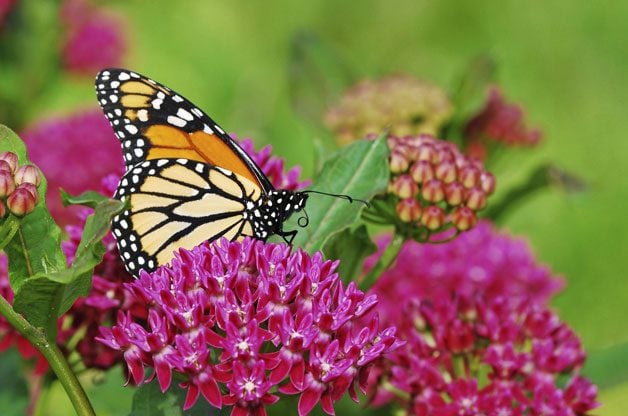
Monarch
It’s the world’s most famous kind of butterfly. The monarch is renowned for its migration, when multiple generations work their way north during spring and summer, then a fall generation flies all the way to southern Mexico or to the California coast to spend the winter. Follow the stages of the monarch butterfly life cycle. Monarch caterpillars eat milkweed, absorbing chemicals that will stay in their system to make even the adults taste bad to predators.
Discover fascinating monarch butterfly facts.
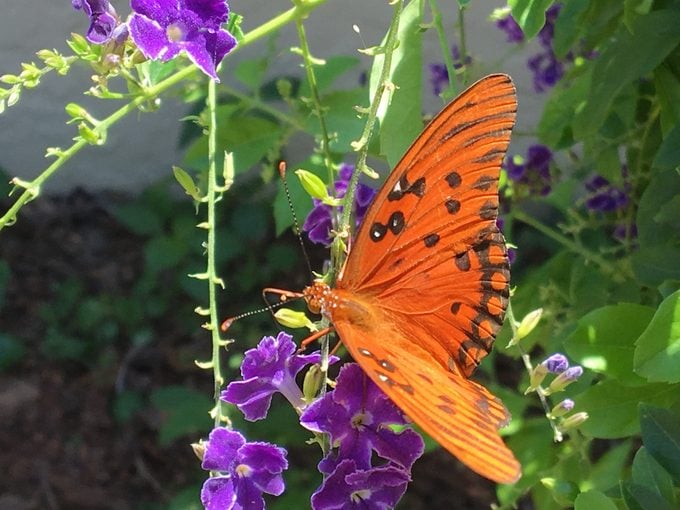
Gulf Fritillary
With long, narrow wings, big silvery spots and a pattern of black lines on orange, the gulf fritillary is a high-fashion butterfly, looking elegant from any angle. Named for the Gulf of Mexico, you can also find it from the Carolinas to California, and it wanders far to the north. Gardeners can spruce up their yards and attract this flashy flier by growing its host plant: passion vine.
Check out 3 butterflies that look like monarchs.
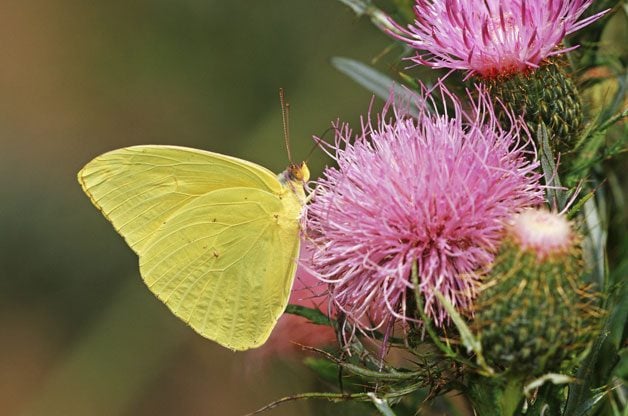
Cloudless Sulphur
North America has many kinds of yellow sulphur butterflies, and this is one of the largest. Males are pale yellow all over, while females vary from white to dull orange. Cloudless sulphurs are most abundant in the South, but every year in late summer they wander far to the north, fluttering along through all kinds of open country, even reaching Canada.
Psst—also look for clouded sulphur butterflies in your backyard.
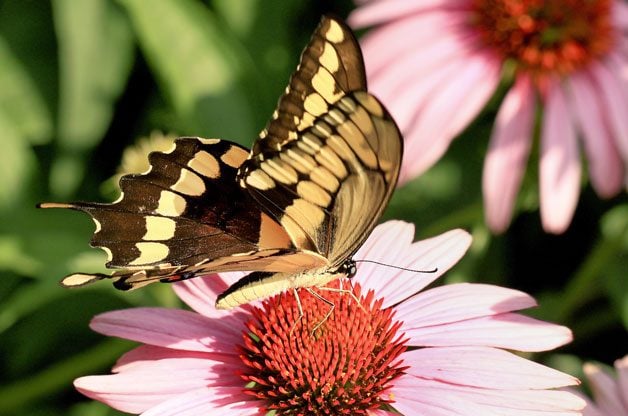
Giant Swallowtail
Although some eastern tiger swallowtails are actually bigger, the giant swallowtail is usually considered to be our largest butterfly, spanning as much as five inches from wingtip to wingtip. Very common across the South, it regularly gets as far north as the Great Lakes and sometimes farther. Its caterpillars feed on leaves of trees and shrubs in the citrus family.
Check out the top 10 swallowtail host plants and flowers to grow.
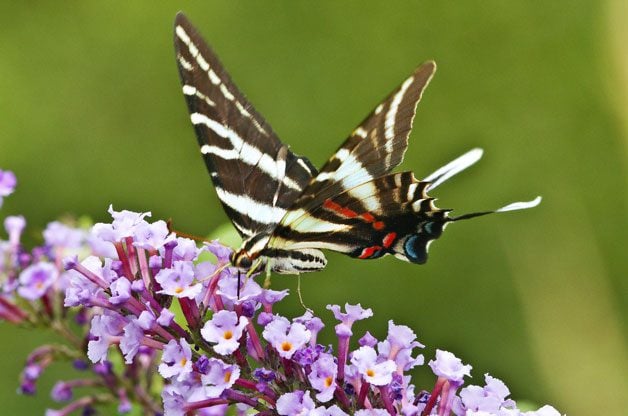
Zebra Swallowtail
This ethereal beauty of a zebra swallowtail butterfly flutters like a dream through eastern forests. Zebra-striped black and white with accents of red, it features long tails on the hindwings. Adults that emerge in summer tend to have even longer tails than the springtime broods. As caterpillars, they feed on the leaves of a small tree called the pawpaw, common in shady woods, especially in the south.
Learn how to attract spicebush swallowtail butterflies and caterpillars.
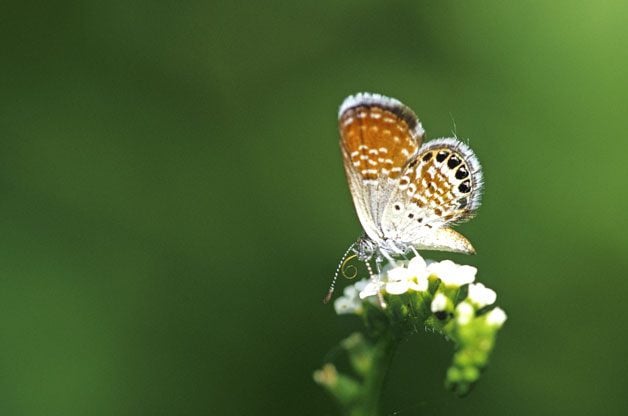
Western Pygmy Blue
Butterflies known as blues are all small, but this one is absurdly tiny, measuring barely over half an inch across with its wings fully spread. There isn’t room for much color on those wings, but a touch of blue shows up in flight. Usually considered to be our smallest butterflies, western pygmy blues are common in the West and Southwest, fluttering low over salt marshes, desert flats and even vacant lots.
Learn how to make a DIY butterfly puddler.
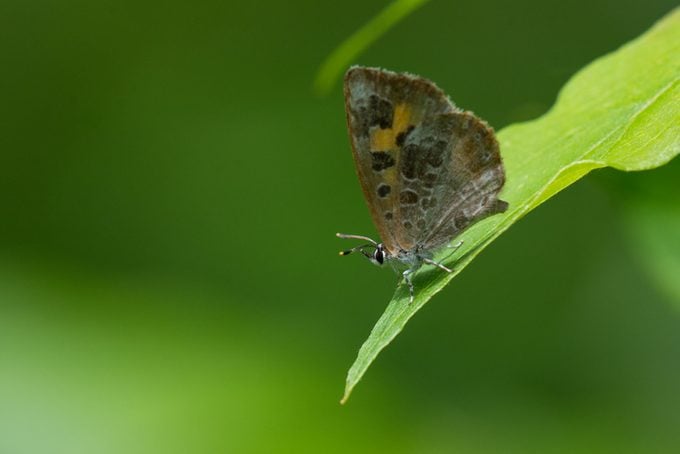
Harvester
A carnivorous butterfly? It sounds like something out of science fiction, but it’s true. The caterpillars of this eastern butterfly are found on alders and other plants, but they’re not eating the plants. Instead, they crawl around munching on aphids. Adult harvesters rarely visit butterfly flowers; you’re more likely to see them chasing each other around the edges of alder thickets near streams.
Learn how to attract and identify a queen butterfly.
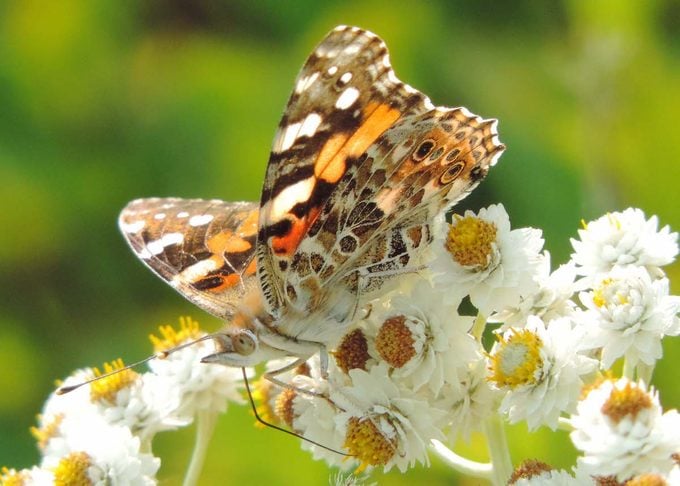
Painted Lady
The most widespread kind of butterflies in the world, painted ladies are found on six continents and many oceanic islands. They’re also found all over North America, but not at the same time. In winter they’re mostly in the Southwest or Mexico, but in warmer seasons they spread across most of the continent. Sometimes they make headlines, with millions flying above open country. Here’s how to help painted lady butterflies on their migration journey.
Moth vs butterfly: here’s how to tell the difference.
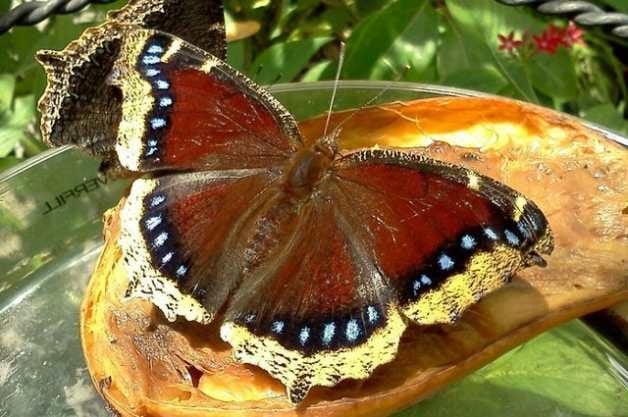
Mourning Cloak
You can find this big, distinctive butterfly throughout North America—and almost throughout the year. While most butterflies pass the winter in the caterpillar, pupa or egg stage, the mourning cloak hibernates as an adult. This means it could come out on warm winter days. Even in the north, it will fly during February thaws, and it makes a stunning sight as it glides through snowy woods.
Meet the gorgeous great spangled fritillary butterfly.
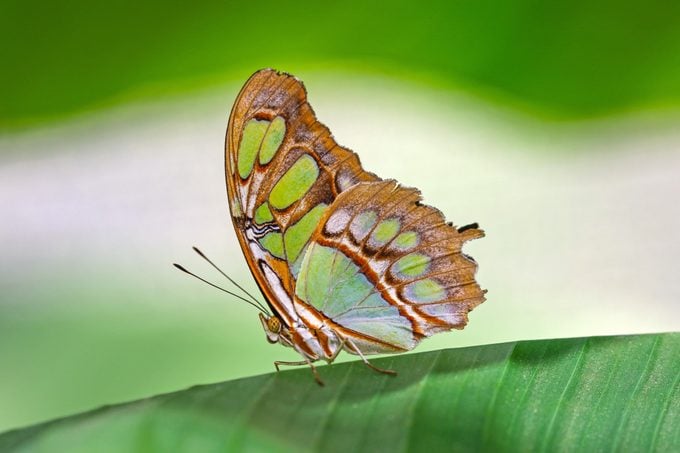
Malachite
Intensely tropical, the big, beautiful malachite flutters through the dappled light and shade of wooded gardens in southern Florida, and sometimes appears in southern Texas as well. When it lands, it shows off a scalloped wing shape and an elegant stained-glass pattern with panes of lime green and frames of chocolate brown.
Here’s how to identify a red-spotted purple butterfly.
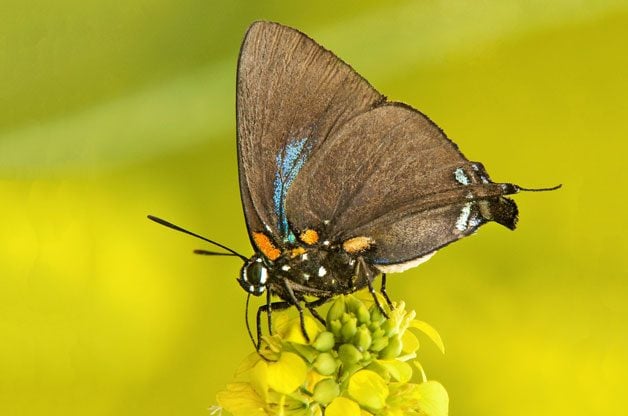
Great Purple Hairstreak
Despite the name, it’s not a great big butterfly, and it’s not purple, either. But it’s larger than most of the hairstreaks (a group of tiny fliers), and it flashes a beautiful blue when it flies. Sitting still, it looks mostly charcoal gray with accents of red, blue, orange and white. And its caterpillars have specialized tastes—they feed on mistletoe.
Meet garden royalty: the viceroy butterfly.
Readers’ Favorite Kinds of Butterflies
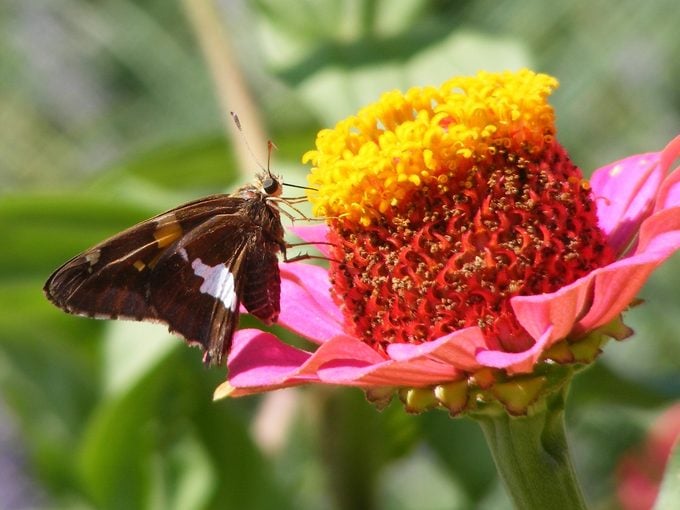
What kind of butterfly is your favorite? Readers share which fluttering beauties they love most and why.
“Since I started gardening, I have discovered several skipper species. At the neighborhood teaching garden, the kids like learning about the butterflies that visit. They get a kick out of trying to say ‘silver-spotted skipper’ fast three times,” says Eva Bellinger of Sun Prairie, Wisconsin.
“My favorite is the western tiger swallowtail because it visits my flowers every summer,” says Esther Koontz of Baker City, Oregon.
“Mourning cloak because, to me, seeing one is a sign of spring,” says Karen Holmes of Cooper, Maine.
“Monarchs are my favorite because I raise them. It is a miracle to watch them change from caterpillar to butterfly. I’m teaching my grandkids the importance of helping pollinators,” says Patti Brown of Perry, Kansas.
“The giant swallowtail is my favorite butterfly. They’re a rarity to see in the Flint Hills of Kansas where I hike. They have such vibrant yellow markings on their delicate wings,” says Jennifer Broadstreet Hess of Marion, Kansas.
“I am fascinated by black swallowtails and their beauty, from the moment the eggs hatch until they morph into breathtaking butterflies,” says Angela Raye of Groveport, Ohio.
Oh, and learn how to fix a broken butterfly wing if you ever run into a battered butterfly.




















